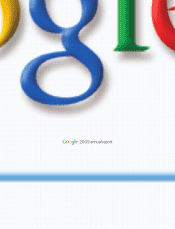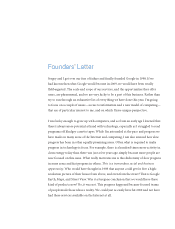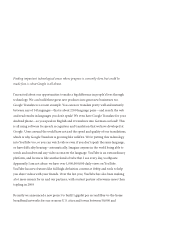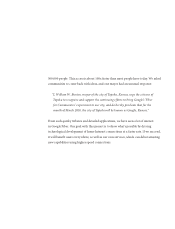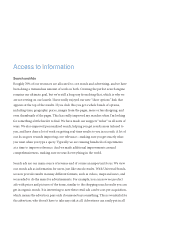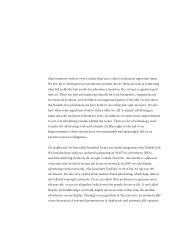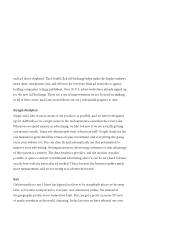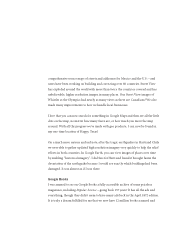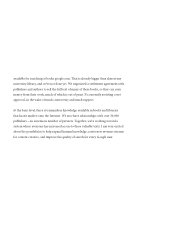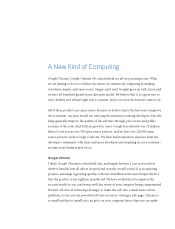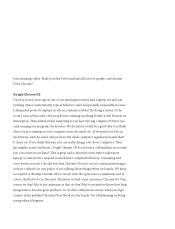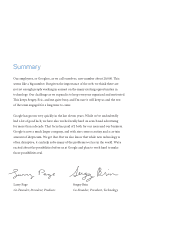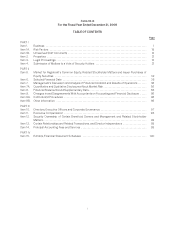Google 2009 Annual Report Download - page 7
Download and view the complete annual report
Please find page 7 of the 2009 Google annual report below. You can navigate through the pages in the report by either clicking on the pages listed below, or by using the keyword search tool below to find specific information within the annual report.their inventory without worry, rather than just a subset of the most important items.
We also get to build great new prediction systems that do the hard work of estimating
what bid yields the best results for advertisers, based on the cost-per-acquisition goal
they set. There are new ad formats specifically for local businesses, comparison ads
for financial products, and sitelinks for navigational queries. I’m really excited about
the benefits new ad formats can have both for our advertisers and our users. We also
have done some significant work to reduce what we call “scammy” advertising to
make ads safer and more relevant for users. In addition, we made many improvements
to our core advertising systems behind the scenes. There is a lot of technology used
to make the advertising work and estimate clickthroughs of ads and so on.
Improvements to these systems have very measurable and meaningful effects on
advertiser and user happiness.
On display ads, we have really benefited from a successful integration with DoubleClick.
We launched new analytics and media planning in DART for Advertisers (DFA),
and have made big strides in the Google Content Network—the extensive collection
of partner sites on which we run ads from our network. In 2009, we sold display
advertising on that network, which includes YouTube, to 94 of the Ad Age top 100
advertisers. I’m also very excited about interest-based advertising, which helps deliver
ads tailored to people’s interests. Users can adjust their preferences to generate more
relevant ads, or opt out altogether (which very few people choose to do). A tool called
Display Ad Builder helps you build display ads in seconds so that even the smallest
advertisers can use display. Through our acquisition of Teracent you can automatically
create thousands of potential permutations of display ads and automatically optimize

